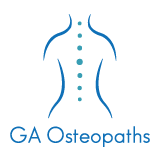Slipped Disc / Disc Injury / Bulging Disc / Herniated Disc / Prolapsed Disc.
An Intervertebral disc is the structure between each vertebra of the spine acting as a cushion or shock absorber and allows us to have such great movement in the spine. When we are young, the disc is strong and bouncy, but as we start to age the disc starts to deteriorate, It starts to flatten and becoming much more susceptible to damage. The disc is made of two parts, the outer part is called the annulus and is made up of dense fibrous tissue to form a strong wall around the inner part, the nucleus. The nucleus is a soft, jelly like substance, a bit like the jam inside a doughnut!
There are two main classifications of a disc injury which are a disc bulge (herniation) or a disc prolapse. A disc bulge is when the nucleus presses against the annular wall causing the structure to bulge out to one side of the vertebrae or it can bulge directly backwards or inwards. A prolapse is when the nucleus completely protrudes through the annular wall and into the surrounding tissues (escapes).
This can happen due to direct trauma or by a chronic weakening of the annular wall in which micro tears begin to form. This allows the nucleus centre to push through causing herniation or prolapse from even the simplest of movements, such as a sneeze!
A disc injury commonly results in pain, muscle tension or spasm around the area. Sometimes the injury will cause nerve root compression as the nerve exits the spine, which may result in radiating pain into the buttocks or lower extremity, pins and needles, numbness or power loss. See Sciatica on GA Osteopaths website.
These names may differ between healthcare practitioners, for example terms often used to describe the same type of injury are slipped disc, disc protrusion, disc rupture or sequestration. A disc injury can occur anywhere along the spine but are most common in the lower back (lumbar spine) and neck (cervical spine).
GA Osteopaths have many hours of training and practice to clinically test and diagnose the most likely cause of your pain. GA Osteopaths will work with you and agree a treatment plan that suits your life style and needs. We will use manual therapy to help with the pain relief and a structured rehabilitation plan combining exercises and stretching in order to assist you with your recovery.
